-
EXECUTIVE
-
SUMMARY
-
Market Overview
-
Key Findings
-
Market
-
Segmentation
-
Competitive Landscape
-
Challenges and Opportunities
-
Future Outlook
-
\r\n
-
MARKET INTRODUCTION
-
Definition
-
Scope of the study
- Research Objective
- Assumption
- Limitations
-
RESEARCH METHODOLOGY
-
Overview
-
Data Mining
-
Secondary Research
- Primary Interviews and Information Gathering Process
- Breakdown of Primary Respondents
-
3.4.
-
Primary Research
-
Forecasting Model
- Bottom-Up Approach
- Top-Down Approach
-
3.6.
-
Market Size Estimation
-
Data Triangulation
-
Validation
-
\r\n
-
MARKET
-
DYNAMICS
-
Overview
-
Drivers
-
Restraints
-
4.4.
-
Opportunities
-
MARKET FACTOR ANALYSIS
-
Value chain Analysis
-
Porter's Five Forces Analysis
- Bargaining Power of Suppliers
- Bargaining Power of Buyers
- Threat of New Entrants
- Threat of Substitutes
- Intensity of Rivalry
-
COVID-19
- Market Impact Analysis
- Regional Impact
- Opportunity and Threat Analysis
-
Impact Analysis
-
\r\n
-
NON-DAIRY
-
CHEESE MARKET, BY TYPE (USD BILLION)
-
Soft Cheese
-
Hard Cheese
-
Cream Cheese
-
Processed Cheese
-
NON-DAIRY CHEESE MARKET,
-
BY SOURCE (USD BILLION)
-
Nuts
-
Soy
-
Coconut
-
7.4.
-
Oats
-
Rice
-
NON-DAIRY CHEESE MARKET, BY FLAVOR (USD BILLION)
-
Plain
-
Smoked
-
Herbed
-
Spicy
-
NON-DAIRY
-
CHEESE MARKET, BY APPLICATION (USD BILLION)
-
Cooking
-
Baking
-
Snacking
-
Spreading
-
NON-DAIRY CHEESE MARKET, BY REGIONAL
-
(USD BILLION)
-
North America
- US
- Canada
-
Europe
- Germany
- UK
- France
- Italy
- Spain
- Rest of Europe
-
10.2.4.
-
Russia
-
APAC
- China
- India
- Japan
- Malaysia
- Thailand
- Indonesia
- Rest of APAC
-
10.3.4.
-
South Korea
-
South America
- Brazil
- Argentina
- Rest of South America
-
10.4.2.
-
Mexico
-
MEA
- GCC Countries
- South Africa
- Rest of MEA
-
\r\n
-
COMPETITIVE LANDSCAPE
-
Overview
-
Competitive Analysis
-
Market share Analysis
-
Major Growth Strategy in the Non-Dairy
-
Cheese Market
-
Competitive Benchmarking
-
Leading Players in
-
Terms of Number of Developments in the Non-Dairy Cheese Market
-
Key developments
- New Product Launch/Service Deployment
- Joint Ventures
-
and growth strategies
-
11.7.2.
-
Merger & Acquisitions
-
Major Players
- Sales and Operating Income
- Major Players
-
Financial Matrix
-
R&D Expenditure. 2023
-
COMPANY PROFILES
-
Tofutti Brands
- Financial Overview
- Products Offered
- Key
- SWOT Analysis
- Key Strategies
- Financial Overview
- Products Offered
- SWOT Analysis
- Key Strategies
- Financial Overview
- Products Offered
- Key Developments
- SWOT Analysis
- Key Strategies
-
Developments
-
12.2.
-
Chao
-
12.2.3.
-
Key Developments
-
12.3.
-
Field Roast
-
Melt Organic
- Financial Overview
- Products
- Key Developments
- SWOT Analysis
-
Offered
-
12.4.5.
-
Key Strategies
-
Primal Foods
- Financial Overview
- Key Developments
- SWOT Analysis
- Key Strategies
-
12.5.2.
-
Products Offered
-
Sheese
- Financial Overview
- Products Offered
- Key Developments
- SWOT Analysis
- Key Strategies
-
Wildbrine
- Financial Overview
- Products Offered
- Key Developments
- SWOT
- Key Strategies
-
Analysis
-
Daiya Foods
- Financial
- Products Offered
- Key Developments
- Key Strategies
-
Overview
-
12.8.4.
-
SWOT Analysis
-
Violife
- Financial
- Products Offered
- Key Developments
- Key Strategies
-
Overview
-
12.9.4.
-
SWOT Analysis
-
Kite Hill
- Products Offered
- Key Developments
- SWOT Analysis
- Key Strategies
-
12.10.1.
-
Financial Overview
-
Spero Foods
- Financial Overview
- Products Offered
- SWOT Analysis
- Key Strategies
-
12.11.3.
-
Key Developments
-
Good Planet Foods
- Financial Overview
- Products
- Key Developments
- SWOT Analysis
-
Offered
-
12.12.5.
-
Key Strategies
-
Miyoko's Creamery
- Financial Overview
- Products Offered
- Key Developments
- SWOT
- Key Strategies
-
Analysis
-
Follow Your Heart
- Products Offered
- Key Developments
- SWOT Analysis
- Key Strategies
-
12.14.1.
-
Financial Overview
-
Nutty Wayne
- Financial Overview
- Products Offered
- SWOT Analysis
- Key Strategies
-
12.15.3.
-
Key Developments
-
APPENDIX
-
References
-
Related Reports
-
\r\n
-
LIST OF TABLES
-
\r\nTABLE 1. LIST OF ASSUMPTIONS
-
TABLE
-
NORTH AMERICA NON-DAIRY CHEESE MARKET SIZE ESTIMATES & FORECAST, BY TYPE,
-
NORTH AMERICA NON-DAIRY CHEESE MARKET SIZE
-
ESTIMATES & FORECAST, BY SOURCE, 2019-2035 (USD BILLIONS)
-
NORTH
-
AMERICA NON-DAIRY CHEESE MARKET SIZE ESTIMATES & FORECAST, BY FLAVOR, 2019-2035
-
(USD BILLIONS)
-
NORTH AMERICA NON-DAIRY CHEESE MARKET SIZE ESTIMATES
-
& FORECAST, BY APPLICATION, 2019-2035 (USD BILLIONS)
-
NORTH AMERICA
-
NON-DAIRY CHEESE MARKET SIZE ESTIMATES & FORECAST, BY REGIONAL, 2019-2035 (USD
-
BILLIONS)
-
US NON-DAIRY CHEESE MARKET SIZE ESTIMATES & FORECAST,
-
BY TYPE, 2019-2035 (USD BILLIONS)
-
US NON-DAIRY CHEESE MARKET SIZE
-
ESTIMATES & FORECAST, BY SOURCE, 2019-2035 (USD BILLIONS)
-
US
-
NON-DAIRY CHEESE MARKET SIZE ESTIMATES & FORECAST, BY FLAVOR, 2019-2035 (USD
-
BILLIONS)
-
US NON-DAIRY CHEESE MARKET SIZE ESTIMATES & FORECAST,
-
BY APPLICATION, 2019-2035 (USD BILLIONS)
-
US NON-DAIRY CHEESE MARKET
-
SIZE ESTIMATES & FORECAST, BY REGIONAL, 2019-2035 (USD BILLIONS)
-
TABLE
-
CANADA NON-DAIRY CHEESE MARKET SIZE ESTIMATES & FORECAST, BY TYPE, 2019-2035
-
(USD BILLIONS)
-
CANADA NON-DAIRY CHEESE MARKET SIZE ESTIMATES &
-
FORECAST, BY SOURCE, 2019-2035 (USD BILLIONS)
-
CANADA NON-DAIRY CHEESE
-
MARKET SIZE ESTIMATES & FORECAST, BY FLAVOR, 2019-2035 (USD BILLIONS)
-
TABLE
-
CANADA NON-DAIRY CHEESE MARKET SIZE ESTIMATES & FORECAST, BY APPLICATION,
-
CANADA NON-DAIRY CHEESE MARKET SIZE ESTIMATES
-
& FORECAST, BY REGIONAL, 2019-2035 (USD BILLIONS)
-
EUROPE NON-DAIRY
-
CHEESE MARKET SIZE ESTIMATES & FORECAST, BY TYPE, 2019-2035 (USD BILLIONS)
-
EUROPE NON-DAIRY CHEESE MARKET SIZE ESTIMATES & FORECAST, BY SOURCE,
-
EUROPE NON-DAIRY CHEESE MARKET SIZE ESTIMATES
-
& FORECAST, BY FLAVOR, 2019-2035 (USD BILLIONS)
-
EUROPE NON-DAIRY
-
CHEESE MARKET SIZE ESTIMATES & FORECAST, BY APPLICATION, 2019-2035 (USD BILLIONS)
-
EUROPE NON-DAIRY CHEESE MARKET SIZE ESTIMATES & FORECAST, BY
-
REGIONAL, 2019-2035 (USD BILLIONS)
-
GERMANY NON-DAIRY CHEESE MARKET
-
SIZE ESTIMATES & FORECAST, BY TYPE, 2019-2035 (USD BILLIONS)
-
TABLE 23.
-
GERMANY NON-DAIRY CHEESE MARKET SIZE ESTIMATES & FORECAST, BY SOURCE, 2019-2035
-
(USD BILLIONS)
-
GERMANY NON-DAIRY CHEESE MARKET SIZE ESTIMATES &
-
FORECAST, BY FLAVOR, 2019-2035 (USD BILLIONS)
-
GERMANY NON-DAIRY
-
CHEESE MARKET SIZE ESTIMATES & FORECAST, BY APPLICATION, 2019-2035 (USD BILLIONS)
-
GERMANY NON-DAIRY CHEESE MARKET SIZE ESTIMATES & FORECAST, BY
-
REGIONAL, 2019-2035 (USD BILLIONS)
-
UK NON-DAIRY CHEESE MARKET SIZE
-
ESTIMATES & FORECAST, BY TYPE, 2019-2035 (USD BILLIONS)
-
UK NON-DAIRY
-
CHEESE MARKET SIZE ESTIMATES & FORECAST, BY SOURCE, 2019-2035 (USD BILLIONS)
-
UK NON-DAIRY CHEESE MARKET SIZE ESTIMATES & FORECAST, BY FLAVOR,
-
UK NON-DAIRY CHEESE MARKET SIZE ESTIMATES
-
& FORECAST, BY APPLICATION, 2019-2035 (USD BILLIONS)
-
UK NON-DAIRY
-
CHEESE MARKET SIZE ESTIMATES & FORECAST, BY REGIONAL, 2019-2035 (USD BILLIONS)
-
FRANCE NON-DAIRY CHEESE MARKET SIZE ESTIMATES & FORECAST, BY
-
TYPE, 2019-2035 (USD BILLIONS)
-
FRANCE NON-DAIRY CHEESE MARKET SIZE
-
ESTIMATES & FORECAST, BY SOURCE, 2019-2035 (USD BILLIONS)
-
FRANCE
-
NON-DAIRY CHEESE MARKET SIZE ESTIMATES & FORECAST, BY FLAVOR, 2019-2035 (USD
-
BILLIONS)
-
FRANCE NON-DAIRY CHEESE MARKET SIZE ESTIMATES & FORECAST,
-
BY APPLICATION, 2019-2035 (USD BILLIONS)
-
FRANCE NON-DAIRY CHEESE
-
MARKET SIZE ESTIMATES & FORECAST, BY REGIONAL, 2019-2035 (USD BILLIONS)
-
RUSSIA NON-DAIRY CHEESE MARKET SIZE ESTIMATES & FORECAST, BY TYPE,
-
RUSSIA NON-DAIRY CHEESE MARKET SIZE ESTIMATES
-
& FORECAST, BY SOURCE, 2019-2035 (USD BILLIONS)
-
RUSSIA NON-DAIRY
-
CHEESE MARKET SIZE ESTIMATES & FORECAST, BY FLAVOR, 2019-2035 (USD BILLIONS)
-
RUSSIA NON-DAIRY CHEESE MARKET SIZE ESTIMATES & FORECAST, BY
-
APPLICATION, 2019-2035 (USD BILLIONS)
-
RUSSIA NON-DAIRY CHEESE MARKET
-
SIZE ESTIMATES & FORECAST, BY REGIONAL, 2019-2035 (USD BILLIONS)
-
TABLE
-
ITALY NON-DAIRY CHEESE MARKET SIZE ESTIMATES & FORECAST, BY TYPE, 2019-2035
-
(USD BILLIONS)
-
ITALY NON-DAIRY CHEESE MARKET SIZE ESTIMATES &
-
FORECAST, BY SOURCE, 2019-2035 (USD BILLIONS)
-
ITALY NON-DAIRY CHEESE
-
MARKET SIZE ESTIMATES & FORECAST, BY FLAVOR, 2019-2035 (USD BILLIONS)
-
TABLE
-
ITALY NON-DAIRY CHEESE MARKET SIZE ESTIMATES & FORECAST, BY APPLICATION,
-
ITALY NON-DAIRY CHEESE MARKET SIZE ESTIMATES
-
& FORECAST, BY REGIONAL, 2019-2035 (USD BILLIONS)
-
SPAIN NON-DAIRY
-
CHEESE MARKET SIZE ESTIMATES & FORECAST, BY TYPE, 2019-2035 (USD BILLIONS)
-
SPAIN NON-DAIRY CHEESE MARKET SIZE ESTIMATES & FORECAST, BY SOURCE,
-
SPAIN NON-DAIRY CHEESE MARKET SIZE ESTIMATES
-
& FORECAST, BY FLAVOR, 2019-2035 (USD BILLIONS)
-
SPAIN NON-DAIRY
-
CHEESE MARKET SIZE ESTIMATES & FORECAST, BY APPLICATION, 2019-2035 (USD BILLIONS)
-
SPAIN NON-DAIRY CHEESE MARKET SIZE ESTIMATES & FORECAST, BY
-
REGIONAL, 2019-2035 (USD BILLIONS)
-
REST OF EUROPE NON-DAIRY CHEESE
-
MARKET SIZE ESTIMATES & FORECAST, BY TYPE, 2019-2035 (USD BILLIONS)
-
TABLE
-
REST OF EUROPE NON-DAIRY CHEESE MARKET SIZE ESTIMATES & FORECAST, BY SOURCE,
-
REST OF EUROPE NON-DAIRY CHEESE MARKET
-
SIZE ESTIMATES & FORECAST, BY FLAVOR, 2019-2035 (USD BILLIONS)
-
TABLE 55.
-
REST OF EUROPE NON-DAIRY CHEESE MARKET SIZE ESTIMATES & FORECAST, BY APPLICATION,
-
REST OF EUROPE NON-DAIRY CHEESE MARKET
-
SIZE ESTIMATES & FORECAST, BY REGIONAL, 2019-2035 (USD BILLIONS)
-
TABLE
-
APAC NON-DAIRY CHEESE MARKET SIZE ESTIMATES & FORECAST, BY TYPE, 2019-2035
-
(USD BILLIONS)
-
APAC NON-DAIRY CHEESE MARKET SIZE ESTIMATES &
-
FORECAST, BY SOURCE, 2019-2035 (USD BILLIONS)
-
APAC NON-DAIRY CHEESE
-
MARKET SIZE ESTIMATES & FORECAST, BY FLAVOR, 2019-2035 (USD BILLIONS)
-
TABLE
-
APAC NON-DAIRY CHEESE MARKET SIZE ESTIMATES & FORECAST, BY APPLICATION,
-
APAC NON-DAIRY CHEESE MARKET SIZE ESTIMATES
-
& FORECAST, BY REGIONAL, 2019-2035 (USD BILLIONS)
-
CHINA NON-DAIRY
-
CHEESE MARKET SIZE ESTIMATES & FORECAST, BY TYPE, 2019-2035 (USD BILLIONS)
-
CHINA NON-DAIRY CHEESE MARKET SIZE ESTIMATES & FORECAST, BY SOURCE,
-
CHINA NON-DAIRY CHEESE MARKET SIZE ESTIMATES
-
& FORECAST, BY FLAVOR, 2019-2035 (USD BILLIONS)
-
CHINA NON-DAIRY
-
CHEESE MARKET SIZE ESTIMATES & FORECAST, BY APPLICATION, 2019-2035 (USD BILLIONS)
-
CHINA NON-DAIRY CHEESE MARKET SIZE ESTIMATES & FORECAST, BY
-
REGIONAL, 2019-2035 (USD BILLIONS)
-
INDIA NON-DAIRY CHEESE MARKET
-
SIZE ESTIMATES & FORECAST, BY TYPE, 2019-2035 (USD BILLIONS)
-
TABLE 68.
-
INDIA NON-DAIRY CHEESE MARKET SIZE ESTIMATES & FORECAST, BY SOURCE, 2019-2035
-
(USD BILLIONS)
-
INDIA NON-DAIRY CHEESE MARKET SIZE ESTIMATES &
-
FORECAST, BY FLAVOR, 2019-2035 (USD BILLIONS)
-
INDIA NON-DAIRY CHEESE
-
MARKET SIZE ESTIMATES & FORECAST, BY APPLICATION, 2019-2035 (USD BILLIONS)
-
INDIA NON-DAIRY CHEESE MARKET SIZE ESTIMATES & FORECAST, BY REGIONAL,
-
JAPAN NON-DAIRY CHEESE MARKET SIZE ESTIMATES
-
& FORECAST, BY TYPE, 2019-2035 (USD BILLIONS)
-
JAPAN NON-DAIRY
-
CHEESE MARKET SIZE ESTIMATES & FORECAST, BY SOURCE, 2019-2035 (USD BILLIONS)
-
JAPAN NON-DAIRY CHEESE MARKET SIZE ESTIMATES & FORECAST, BY
-
FLAVOR, 2019-2035 (USD BILLIONS)
-
JAPAN NON-DAIRY CHEESE MARKET SIZE
-
ESTIMATES & FORECAST, BY APPLICATION, 2019-2035 (USD BILLIONS)
-
TABLE 76.
-
JAPAN NON-DAIRY CHEESE MARKET SIZE ESTIMATES & FORECAST, BY REGIONAL, 2019-2035
-
(USD BILLIONS)
-
SOUTH KOREA NON-DAIRY CHEESE MARKET SIZE ESTIMATES
-
& FORECAST, BY TYPE, 2019-2035 (USD BILLIONS)
-
SOUTH KOREA NON-DAIRY
-
CHEESE MARKET SIZE ESTIMATES & FORECAST, BY SOURCE, 2019-2035 (USD BILLIONS)
-
SOUTH KOREA NON-DAIRY CHEESE MARKET SIZE ESTIMATES & FORECAST,
-
BY FLAVOR, 2019-2035 (USD BILLIONS)
-
SOUTH KOREA NON-DAIRY CHEESE
-
MARKET SIZE ESTIMATES & FORECAST, BY APPLICATION, 2019-2035 (USD BILLIONS)
-
SOUTH KOREA NON-DAIRY CHEESE MARKET SIZE ESTIMATES & FORECAST, BY
-
REGIONAL, 2019-2035 (USD BILLIONS)
-
MALAYSIA NON-DAIRY CHEESE MARKET
-
SIZE ESTIMATES & FORECAST, BY TYPE, 2019-2035 (USD BILLIONS)
-
TABLE 83.
-
MALAYSIA NON-DAIRY CHEESE MARKET SIZE ESTIMATES & FORECAST, BY SOURCE, 2019-2035
-
(USD BILLIONS)
-
MALAYSIA NON-DAIRY CHEESE MARKET SIZE ESTIMATES &
-
FORECAST, BY FLAVOR, 2019-2035 (USD BILLIONS)
-
MALAYSIA NON-DAIRY
-
CHEESE MARKET SIZE ESTIMATES & FORECAST, BY APPLICATION, 2019-2035 (USD BILLIONS)
-
MALAYSIA NON-DAIRY CHEESE MARKET SIZE ESTIMATES & FORECAST,
-
BY REGIONAL, 2019-2035 (USD BILLIONS)
-
THAILAND NON-DAIRY CHEESE
-
MARKET SIZE ESTIMATES & FORECAST, BY TYPE, 2019-2035 (USD BILLIONS)
-
TABLE
-
THAILAND NON-DAIRY CHEESE MARKET SIZE ESTIMATES & FORECAST, BY SOURCE, 2019-2035
-
(USD BILLIONS)
-
THAILAND NON-DAIRY CHEESE MARKET SIZE ESTIMATES &
-
FORECAST, BY FLAVOR, 2019-2035 (USD BILLIONS)
-
THAILAND NON-DAIRY
-
CHEESE MARKET SIZE ESTIMATES & FORECAST, BY APPLICATION, 2019-2035 (USD BILLIONS)
-
THAILAND NON-DAIRY CHEESE MARKET SIZE ESTIMATES & FORECAST,
-
BY REGIONAL, 2019-2035 (USD BILLIONS)
-
INDONESIA NON-DAIRY CHEESE
-
MARKET SIZE ESTIMATES & FORECAST, BY TYPE, 2019-2035 (USD BILLIONS)
-
TABLE
-
INDONESIA NON-DAIRY CHEESE MARKET SIZE ESTIMATES & FORECAST, BY SOURCE,
-
INDONESIA NON-DAIRY CHEESE MARKET SIZE
-
ESTIMATES & FORECAST, BY FLAVOR, 2019-2035 (USD BILLIONS)
-
INDONESIA
-
NON-DAIRY CHEESE MARKET SIZE ESTIMATES & FORECAST, BY APPLICATION, 2019-2035
-
(USD BILLIONS)
-
INDONESIA NON-DAIRY CHEESE MARKET SIZE ESTIMATES
-
& FORECAST, BY REGIONAL, 2019-2035 (USD BILLIONS)
-
REST OF APAC
-
NON-DAIRY CHEESE MARKET SIZE ESTIMATES & FORECAST, BY TYPE, 2019-2035 (USD BILLIONS)
-
REST OF APAC NON-DAIRY CHEESE MARKET SIZE ESTIMATES & FORECAST,
-
BY SOURCE, 2019-2035 (USD BILLIONS)
-
REST OF APAC NON-DAIRY CHEESE
-
MARKET SIZE ESTIMATES & FORECAST, BY FLAVOR, 2019-2035 (USD BILLIONS)
-
TABLE
-
REST OF APAC NON-DAIRY CHEESE MARKET SIZE ESTIMATES & FORECAST, BY APPLICATION,
-
REST OF APAC NON-DAIRY CHEESE MARKET SIZE
-
ESTIMATES & FORECAST, BY REGIONAL, 2019-2035 (USD BILLIONS)
-
TABLE 102.
-
SOUTH AMERICA NON-DAIRY CHEESE MARKET SIZE ESTIMATES & FORECAST, BY TYPE, 2019-2035
-
(USD BILLIONS)
-
SOUTH AMERICA NON-DAIRY CHEESE MARKET SIZE ESTIMATES
-
& FORECAST, BY SOURCE, 2019-2035 (USD BILLIONS)
-
SOUTH AMERICA
-
NON-DAIRY CHEESE MARKET SIZE ESTIMATES & FORECAST, BY FLAVOR, 2019-2035 (USD
-
BILLIONS)
-
SOUTH AMERICA NON-DAIRY CHEESE MARKET SIZE ESTIMATES
-
& FORECAST, BY APPLICATION, 2019-2035 (USD BILLIONS)
-
SOUTH
-
AMERICA NON-DAIRY CHEESE MARKET SIZE ESTIMATES & FORECAST, BY REGIONAL, 2019-2035
-
(USD BILLIONS)
-
BRAZIL NON-DAIRY CHEESE MARKET SIZE ESTIMATES &
-
FORECAST, BY TYPE, 2019-2035 (USD BILLIONS)
-
BRAZIL NON-DAIRY CHEESE
-
MARKET SIZE ESTIMATES & FORECAST, BY SOURCE, 2019-2035 (USD BILLIONS)
-
TABLE
-
BRAZIL NON-DAIRY CHEESE MARKET SIZE ESTIMATES & FORECAST, BY FLAVOR, 2019-2035
-
(USD BILLIONS)
-
BRAZIL NON-DAIRY CHEESE MARKET SIZE ESTIMATES &
-
FORECAST, BY APPLICATION, 2019-2035 (USD BILLIONS)
-
BRAZIL NON-DAIRY
-
CHEESE MARKET SIZE ESTIMATES & FORECAST, BY REGIONAL, 2019-2035 (USD BILLIONS)
-
MEXICO NON-DAIRY CHEESE MARKET SIZE ESTIMATES & FORECAST, BY
-
TYPE, 2019-2035 (USD BILLIONS)
-
MEXICO NON-DAIRY CHEESE MARKET SIZE
-
ESTIMATES & FORECAST, BY SOURCE, 2019-2035 (USD BILLIONS)
-
MEXICO
-
NON-DAIRY CHEESE MARKET SIZE ESTIMATES & FORECAST, BY FLAVOR, 2019-2035 (USD
-
BILLIONS)
-
MEXICO NON-DAIRY CHEESE MARKET SIZE ESTIMATES & FORECAST,
-
BY APPLICATION, 2019-2035 (USD BILLIONS)
-
MEXICO NON-DAIRY CHEESE
-
MARKET SIZE ESTIMATES & FORECAST, BY REGIONAL, 2019-2035 (USD BILLIONS)
-
ARGENTINA NON-DAIRY CHEESE MARKET SIZE ESTIMATES & FORECAST, BY
-
TYPE, 2019-2035 (USD BILLIONS)
-
ARGENTINA NON-DAIRY CHEESE MARKET
-
SIZE ESTIMATES & FORECAST, BY SOURCE, 2019-2035 (USD BILLIONS)
-
TABLE 119.
-
ARGENTINA NON-DAIRY CHEESE MARKET SIZE ESTIMATES & FORECAST, BY FLAVOR, 2019-2035
-
(USD BILLIONS)
-
ARGENTINA NON-DAIRY CHEESE MARKET SIZE ESTIMATES
-
& FORECAST, BY APPLICATION, 2019-2035 (USD BILLIONS)
-
ARGENTINA
-
NON-DAIRY CHEESE MARKET SIZE ESTIMATES & FORECAST, BY REGIONAL, 2019-2035 (USD
-
BILLIONS)
-
REST OF SOUTH AMERICA NON-DAIRY CHEESE MARKET SIZE ESTIMATES
-
& FORECAST, BY TYPE, 2019-2035 (USD BILLIONS)
-
REST OF SOUTH
-
AMERICA NON-DAIRY CHEESE MARKET SIZE ESTIMATES & FORECAST, BY SOURCE, 2019-2035
-
(USD BILLIONS)
-
REST OF SOUTH AMERICA NON-DAIRY CHEESE MARKET SIZE
-
ESTIMATES & FORECAST, BY FLAVOR, 2019-2035 (USD BILLIONS)
-
REST
-
OF SOUTH AMERICA NON-DAIRY CHEESE MARKET SIZE ESTIMATES & FORECAST, BY APPLICATION,
-
REST OF SOUTH AMERICA NON-DAIRY CHEESE
-
MARKET SIZE ESTIMATES & FORECAST, BY REGIONAL, 2019-2035 (USD BILLIONS)
-
MEA NON-DAIRY CHEESE MARKET SIZE ESTIMATES & FORECAST, BY TYPE,
-
MEA NON-DAIRY CHEESE MARKET SIZE ESTIMATES
-
& FORECAST, BY SOURCE, 2019-2035 (USD BILLIONS)
-
MEA NON-DAIRY
-
CHEESE MARKET SIZE ESTIMATES & FORECAST, BY FLAVOR, 2019-2035 (USD BILLIONS)
-
MEA NON-DAIRY CHEESE MARKET SIZE ESTIMATES & FORECAST, BY APPLICATION,
-
MEA NON-DAIRY CHEESE MARKET SIZE ESTIMATES
-
& FORECAST, BY REGIONAL, 2019-2035 (USD BILLIONS)
-
GCC COUNTRIES
-
NON-DAIRY CHEESE MARKET SIZE ESTIMATES & FORECAST, BY TYPE, 2019-2035 (USD BILLIONS)
-
GCC COUNTRIES NON-DAIRY CHEESE MARKET SIZE ESTIMATES & FORECAST,
-
BY SOURCE, 2019-2035 (USD BILLIONS)
-
GCC COUNTRIES NON-DAIRY CHEESE
-
MARKET SIZE ESTIMATES & FORECAST, BY FLAVOR, 2019-2035 (USD BILLIONS)
-
TABLE
-
GCC COUNTRIES NON-DAIRY CHEESE MARKET SIZE ESTIMATES & FORECAST, BY APPLICATION,
-
GCC COUNTRIES NON-DAIRY CHEESE MARKET
-
SIZE ESTIMATES & FORECAST, BY REGIONAL, 2019-2035 (USD BILLIONS)
-
TABLE
-
SOUTH AFRICA NON-DAIRY CHEESE MARKET SIZE ESTIMATES & FORECAST, BY TYPE,
-
SOUTH AFRICA NON-DAIRY CHEESE MARKET SIZE
-
ESTIMATES & FORECAST, BY SOURCE, 2019-2035 (USD BILLIONS)
-
SOUTH
-
AFRICA NON-DAIRY CHEESE MARKET SIZE ESTIMATES & FORECAST, BY FLAVOR, 2019-2035
-
(USD BILLIONS)
-
SOUTH AFRICA NON-DAIRY CHEESE MARKET SIZE ESTIMATES
-
& FORECAST, BY APPLICATION, 2019-2035 (USD BILLIONS)
-
SOUTH
-
AFRICA NON-DAIRY CHEESE MARKET SIZE ESTIMATES & FORECAST, BY REGIONAL, 2019-2035
-
(USD BILLIONS)
-
REST OF MEA NON-DAIRY CHEESE MARKET SIZE ESTIMATES
-
& FORECAST, BY TYPE, 2019-2035 (USD BILLIONS)
-
REST OF MEA NON-DAIRY
-
CHEESE MARKET SIZE ESTIMATES & FORECAST, BY SOURCE, 2019-2035 (USD BILLIONS)
-
REST OF MEA NON-DAIRY CHEESE MARKET SIZE ESTIMATES & FORECAST,
-
BY FLAVOR, 2019-2035 (USD BILLIONS)
-
REST OF MEA NON-DAIRY CHEESE
-
MARKET SIZE ESTIMATES & FORECAST, BY APPLICATION, 2019-2035 (USD BILLIONS)
-
REST OF MEA NON-DAIRY CHEESE MARKET SIZE ESTIMATES & FORECAST,
-
BY REGIONAL, 2019-2035 (USD BILLIONS)
-
PRODUCT LAUNCH/PRODUCT DEVELOPMENT/APPROVAL
-
ACQUISITION/PARTNERSHIP
-
\r\nLIST OF FIGURES
-
\r\nFIGURE
-
MARKET SYNOPSIS
-
NORTH AMERICA NON-DAIRY CHEESE MARKET ANALYSIS
-
US NON-DAIRY CHEESE MARKET ANALYSIS BY TYPE
-
US NON-DAIRY
-
CHEESE MARKET ANALYSIS BY SOURCE
-
US NON-DAIRY CHEESE MARKET ANALYSIS
-
BY FLAVOR
-
US NON-DAIRY CHEESE MARKET ANALYSIS BY APPLICATION
-
US NON-DAIRY CHEESE MARKET ANALYSIS BY REGIONAL
-
CANADA
-
NON-DAIRY CHEESE MARKET ANALYSIS BY TYPE
-
CANADA NON-DAIRY CHEESE
-
MARKET ANALYSIS BY SOURCE
-
CANADA NON-DAIRY CHEESE MARKET ANALYSIS
-
BY FLAVOR
-
CANADA NON-DAIRY CHEESE MARKET ANALYSIS BY APPLICATION
-
CANADA NON-DAIRY CHEESE MARKET ANALYSIS BY REGIONAL
-
FIGURE
-
EUROPE NON-DAIRY CHEESE MARKET ANALYSIS
-
GERMANY NON-DAIRY CHEESE
-
MARKET ANALYSIS BY TYPE
-
GERMANY NON-DAIRY CHEESE MARKET ANALYSIS
-
BY SOURCE
-
GERMANY NON-DAIRY CHEESE MARKET ANALYSIS BY FLAVOR
-
GERMANY NON-DAIRY CHEESE MARKET ANALYSIS BY APPLICATION
-
FIGURE
-
GERMANY NON-DAIRY CHEESE MARKET ANALYSIS BY REGIONAL
-
UK NON-DAIRY
-
CHEESE MARKET ANALYSIS BY TYPE
-
UK NON-DAIRY CHEESE MARKET ANALYSIS
-
BY SOURCE
-
UK NON-DAIRY CHEESE MARKET ANALYSIS BY FLAVOR
-
FIGURE
-
UK NON-DAIRY CHEESE MARKET ANALYSIS BY APPLICATION
-
UK NON-DAIRY
-
CHEESE MARKET ANALYSIS BY REGIONAL
-
FRANCE NON-DAIRY CHEESE MARKET
-
ANALYSIS BY TYPE
-
FRANCE NON-DAIRY CHEESE MARKET ANALYSIS BY SOURCE
-
FRANCE NON-DAIRY CHEESE MARKET ANALYSIS BY FLAVOR
-
FIGURE
-
FRANCE NON-DAIRY CHEESE MARKET ANALYSIS BY APPLICATION
-
FRANCE
-
NON-DAIRY CHEESE MARKET ANALYSIS BY REGIONAL
-
RUSSIA NON-DAIRY CHEESE
-
MARKET ANALYSIS BY TYPE
-
RUSSIA NON-DAIRY CHEESE MARKET ANALYSIS
-
BY SOURCE
-
RUSSIA NON-DAIRY CHEESE MARKET ANALYSIS BY FLAVOR
-
RUSSIA NON-DAIRY CHEESE MARKET ANALYSIS BY APPLICATION
-
FIGURE
-
RUSSIA NON-DAIRY CHEESE MARKET ANALYSIS BY REGIONAL
-
ITALY NON-DAIRY
-
CHEESE MARKET ANALYSIS BY TYPE
-
ITALY NON-DAIRY CHEESE MARKET ANALYSIS
-
BY SOURCE
-
ITALY NON-DAIRY CHEESE MARKET ANALYSIS BY FLAVOR
-
ITALY NON-DAIRY CHEESE MARKET ANALYSIS BY APPLICATION
-
FIGURE
-
ITALY NON-DAIRY CHEESE MARKET ANALYSIS BY REGIONAL
-
SPAIN NON-DAIRY
-
CHEESE MARKET ANALYSIS BY TYPE
-
SPAIN NON-DAIRY CHEESE MARKET ANALYSIS
-
BY SOURCE
-
SPAIN NON-DAIRY CHEESE MARKET ANALYSIS BY FLAVOR
-
SPAIN NON-DAIRY CHEESE MARKET ANALYSIS BY APPLICATION
-
FIGURE
-
SPAIN NON-DAIRY CHEESE MARKET ANALYSIS BY REGIONAL
-
REST OF
-
EUROPE NON-DAIRY CHEESE MARKET ANALYSIS BY TYPE
-
REST OF EUROPE
-
NON-DAIRY CHEESE MARKET ANALYSIS BY SOURCE
-
REST OF EUROPE NON-DAIRY
-
CHEESE MARKET ANALYSIS BY FLAVOR
-
REST OF EUROPE NON-DAIRY CHEESE
-
MARKET ANALYSIS BY APPLICATION
-
REST OF EUROPE NON-DAIRY CHEESE
-
MARKET ANALYSIS BY REGIONAL
-
APAC NON-DAIRY CHEESE MARKET ANALYSIS
-
CHINA NON-DAIRY CHEESE MARKET ANALYSIS BY TYPE
-
FIGURE 51.
-
CHINA NON-DAIRY CHEESE MARKET ANALYSIS BY SOURCE
-
CHINA NON-DAIRY
-
CHEESE MARKET ANALYSIS BY FLAVOR
-
CHINA NON-DAIRY CHEESE MARKET
-
ANALYSIS BY APPLICATION
-
CHINA NON-DAIRY CHEESE MARKET ANALYSIS
-
BY REGIONAL
-
INDIA NON-DAIRY CHEESE MARKET ANALYSIS BY TYPE
-
INDIA NON-DAIRY CHEESE MARKET ANALYSIS BY SOURCE
-
INDIA
-
NON-DAIRY CHEESE MARKET ANALYSIS BY FLAVOR
-
INDIA NON-DAIRY CHEESE
-
MARKET ANALYSIS BY APPLICATION
-
INDIA NON-DAIRY CHEESE MARKET ANALYSIS
-
BY REGIONAL
-
JAPAN NON-DAIRY CHEESE MARKET ANALYSIS BY TYPE
-
JAPAN NON-DAIRY CHEESE MARKET ANALYSIS BY SOURCE
-
JAPAN
-
NON-DAIRY CHEESE MARKET ANALYSIS BY FLAVOR
-
JAPAN NON-DAIRY CHEESE
-
MARKET ANALYSIS BY APPLICATION
-
JAPAN NON-DAIRY CHEESE MARKET ANALYSIS
-
BY REGIONAL
-
SOUTH KOREA NON-DAIRY CHEESE MARKET ANALYSIS BY TYPE
-
SOUTH KOREA NON-DAIRY CHEESE MARKET ANALYSIS BY SOURCE
-
FIGURE
-
SOUTH KOREA NON-DAIRY CHEESE MARKET ANALYSIS BY FLAVOR
-
SOUTH
-
KOREA NON-DAIRY CHEESE MARKET ANALYSIS BY APPLICATION
-
SOUTH KOREA
-
NON-DAIRY CHEESE MARKET ANALYSIS BY REGIONAL
-
MALAYSIA NON-DAIRY
-
CHEESE MARKET ANALYSIS BY TYPE
-
MALAYSIA NON-DAIRY CHEESE MARKET
-
ANALYSIS BY SOURCE
-
MALAYSIA NON-DAIRY CHEESE MARKET ANALYSIS BY
-
FLAVOR
-
MALAYSIA NON-DAIRY CHEESE MARKET ANALYSIS BY APPLICATION
-
MALAYSIA NON-DAIRY CHEESE MARKET ANALYSIS BY REGIONAL
-
FIGURE
-
THAILAND NON-DAIRY CHEESE MARKET ANALYSIS BY TYPE
-
THAILAND
-
NON-DAIRY CHEESE MARKET ANALYSIS BY SOURCE
-
THAILAND NON-DAIRY CHEESE
-
MARKET ANALYSIS BY FLAVOR
-
THAILAND NON-DAIRY CHEESE MARKET ANALYSIS
-
BY APPLICATION
-
THAILAND NON-DAIRY CHEESE MARKET ANALYSIS BY REGIONAL
-
INDONESIA NON-DAIRY CHEESE MARKET ANALYSIS BY TYPE
-
FIGURE
-
INDONESIA NON-DAIRY CHEESE MARKET ANALYSIS BY SOURCE
-
INDONESIA
-
NON-DAIRY CHEESE MARKET ANALYSIS BY FLAVOR
-
INDONESIA NON-DAIRY
-
CHEESE MARKET ANALYSIS BY APPLICATION
-
INDONESIA NON-DAIRY CHEESE
-
MARKET ANALYSIS BY REGIONAL
-
REST OF APAC NON-DAIRY CHEESE MARKET
-
ANALYSIS BY TYPE
-
REST OF APAC NON-DAIRY CHEESE MARKET ANALYSIS
-
BY SOURCE
-
REST OF APAC NON-DAIRY CHEESE MARKET ANALYSIS BY FLAVOR
-
REST OF APAC NON-DAIRY CHEESE MARKET ANALYSIS BY APPLICATION
-
REST OF APAC NON-DAIRY CHEESE MARKET ANALYSIS BY REGIONAL
-
FIGURE
-
SOUTH AMERICA NON-DAIRY CHEESE MARKET ANALYSIS
-
BRAZIL NON-DAIRY
-
CHEESE MARKET ANALYSIS BY TYPE
-
BRAZIL NON-DAIRY CHEESE MARKET ANALYSIS
-
BY SOURCE
-
BRAZIL NON-DAIRY CHEESE MARKET ANALYSIS BY FLAVOR
-
BRAZIL NON-DAIRY CHEESE MARKET ANALYSIS BY APPLICATION
-
FIGURE
-
BRAZIL NON-DAIRY CHEESE MARKET ANALYSIS BY REGIONAL
-
MEXICO
-
NON-DAIRY CHEESE MARKET ANALYSIS BY TYPE
-
MEXICO NON-DAIRY CHEESE
-
MARKET ANALYSIS BY SOURCE
-
MEXICO NON-DAIRY CHEESE MARKET ANALYSIS
-
BY FLAVOR
-
MEXICO NON-DAIRY CHEESE MARKET ANALYSIS BY APPLICATION
-
MEXICO NON-DAIRY CHEESE MARKET ANALYSIS BY REGIONAL
-
FIGURE
-
ARGENTINA NON-DAIRY CHEESE MARKET ANALYSIS BY TYPE
-
ARGENTINA
-
NON-DAIRY CHEESE MARKET ANALYSIS BY SOURCE
-
ARGENTINA NON-DAIRY
-
CHEESE MARKET ANALYSIS BY FLAVOR
-
ARGENTINA NON-DAIRY CHEESE MARKET
-
ANALYSIS BY APPLICATION
-
ARGENTINA NON-DAIRY CHEESE MARKET ANALYSIS
-
BY REGIONAL
-
REST OF SOUTH AMERICA NON-DAIRY CHEESE MARKET ANALYSIS
-
BY TYPE
-
REST OF SOUTH AMERICA NON-DAIRY CHEESE MARKET ANALYSIS
-
BY SOURCE
-
REST OF SOUTH AMERICA NON-DAIRY CHEESE MARKET ANALYSIS
-
BY FLAVOR
-
REST OF SOUTH AMERICA NON-DAIRY CHEESE MARKET ANALYSIS
-
BY APPLICATION
-
REST OF SOUTH AMERICA NON-DAIRY CHEESE MARKET ANALYSIS
-
BY REGIONAL
-
MEA NON-DAIRY CHEESE MARKET ANALYSIS
-
FIGURE
-
GCC COUNTRIES NON-DAIRY CHEESE MARKET ANALYSIS BY TYPE
-
GCC
-
COUNTRIES NON-DAIRY CHEESE MARKET ANALYSIS BY SOURCE
-
GCC COUNTRIES
-
NON-DAIRY CHEESE MARKET ANALYSIS BY FLAVOR
-
GCC COUNTRIES NON-DAIRY
-
CHEESE MARKET ANALYSIS BY APPLICATION
-
GCC COUNTRIES NON-DAIRY
-
CHEESE MARKET ANALYSIS BY REGIONAL
-
SOUTH AFRICA NON-DAIRY CHEESE
-
MARKET ANALYSIS BY TYPE
-
SOUTH AFRICA NON-DAIRY CHEESE MARKET ANALYSIS
-
BY SOURCE
-
SOUTH AFRICA NON-DAIRY CHEESE MARKET ANALYSIS BY FLAVOR
-
SOUTH AFRICA NON-DAIRY CHEESE MARKET ANALYSIS BY APPLICATION
-
SOUTH AFRICA NON-DAIRY CHEESE MARKET ANALYSIS BY REGIONAL
-
FIGURE
-
REST OF MEA NON-DAIRY CHEESE MARKET ANALYSIS BY TYPE
-
REST
-
OF MEA NON-DAIRY CHEESE MARKET ANALYSIS BY SOURCE
-
REST OF MEA
-
NON-DAIRY CHEESE MARKET ANALYSIS BY FLAVOR
-
REST OF MEA NON-DAIRY
-
CHEESE MARKET ANALYSIS BY APPLICATION
-
REST OF MEA NON-DAIRY CHEESE
-
MARKET ANALYSIS BY REGIONAL
-
KEY BUYING CRITERIA OF NON-DAIRY CHEESE
-
MARKET
-
RESEARCH PROCESS OF MRFR
-
DRO ANALYSIS
-
OF NON-DAIRY CHEESE MARKET
-
DRIVERS IMPACT ANALYSIS: NON-DAIRY
-
CHEESE MARKET
-
RESTRAINTS IMPACT ANALYSIS: NON-DAIRY CHEESE MARKET
-
SUPPLY / VALUE CHAIN: NON-DAIRY CHEESE MARKET
-
FIGURE 133.
-
NON-DAIRY CHEESE MARKET, BY TYPE, 2025 (% SHARE)
-
NON-DAIRY CHEESE
-
MARKET, BY TYPE, 2019 TO 2035 (USD Billions)
-
NON-DAIRY CHEESE
-
MARKET, BY SOURCE, 2025 (% SHARE)
-
NON-DAIRY CHEESE MARKET, BY
-
SOURCE, 2019 TO 2035 (USD Billions)
-
NON-DAIRY CHEESE MARKET, BY
-
FLAVOR, 2025 (% SHARE)
-
NON-DAIRY CHEESE MARKET, BY FLAVOR, 2019
-
TO 2035 (USD Billions)
-
NON-DAIRY CHEESE MARKET, BY APPLICATION,
-
NON-DAIRY CHEESE MARKET, BY APPLICATION, 2019 TO
-
NON-DAIRY CHEESE MARKET, BY REGIONAL, 2025
-
(% SHARE)
-
NON-DAIRY CHEESE MARKET, BY REGIONAL, 2019 TO 2035 (USD
-
Billions)
-
BENCHMARKING OF MAJOR COMPETITORS
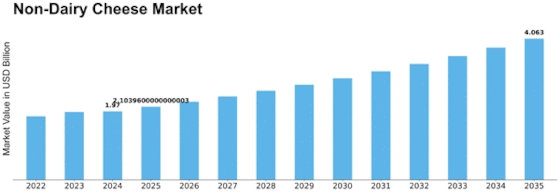

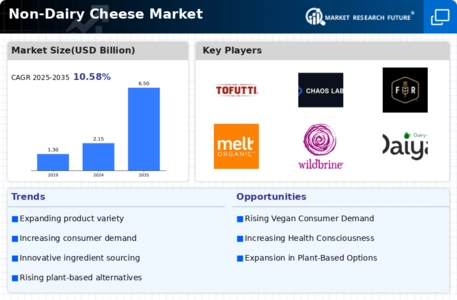
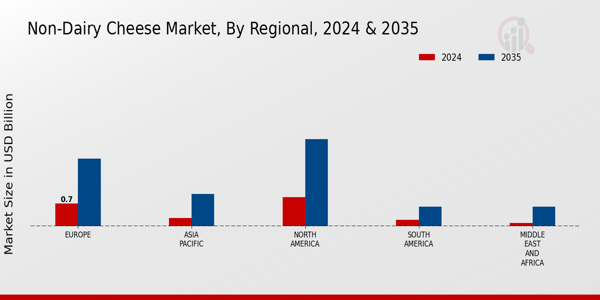
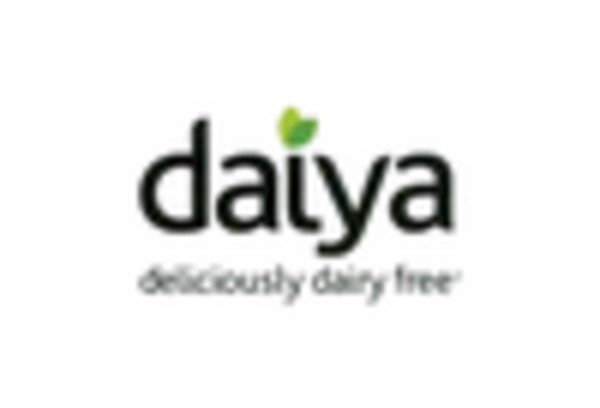

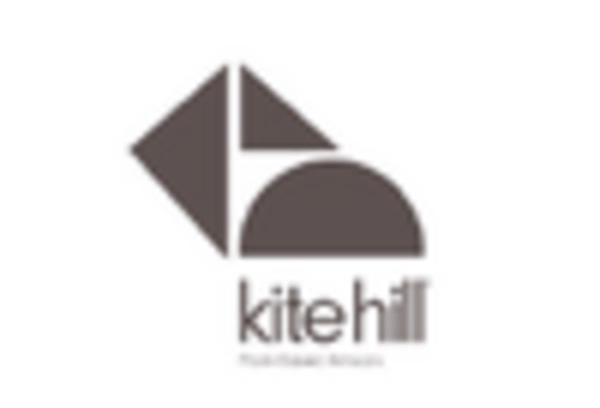
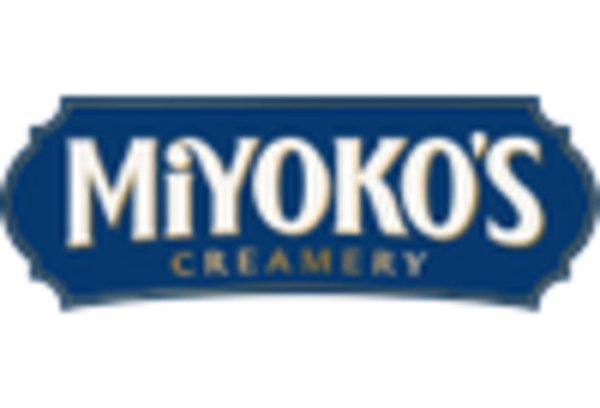
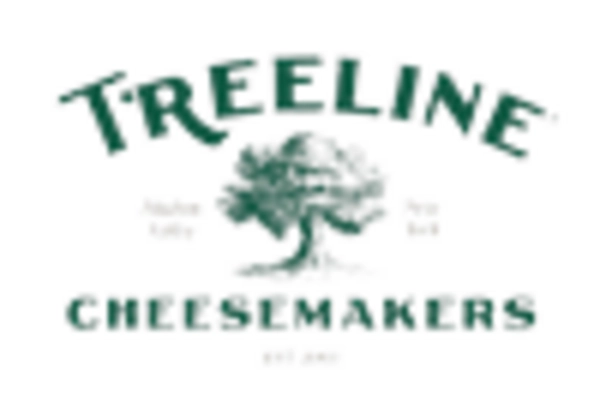
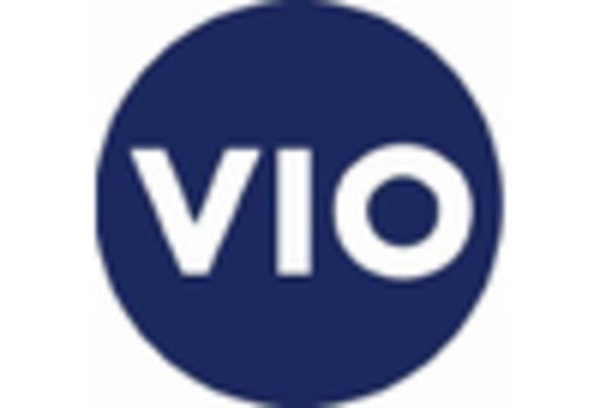

Leave a Comment